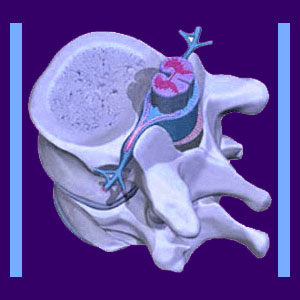
Arthritis joint pain can occur almost anywhere in the body when the anatomical changes enacted by osteoarthritis are severe. Arthritis is a condition that mostly affects the areas where bones meet, called joints. These joints are normally protected by cartilage and enclosed in a capsule of synovial fluid. These help to ensure that the joint functions smoothly and without friction. Arthritis attacks and breaks down these protective tissues. The effects of arthritis include increased skeletal friction and the possible formation of osteophytes, also called bone spurs.
This article will focus on the changes that arthritis can make inside joint capsules and why these alterations may become painful over time.
Arthritis Joint Pain Locations
Vertebral arthritis is very common, since the spine is an area that has a huge number of joints. The vertebrae are normally held apart by the intervertebral discs. As people age, the discs flatten, the protective cartilage is worn away and the spinal facet joints suffer degeneration. This spinal degeneration is normally not severely painful, although some minor aches and pains are not uncommon. Acute or severe chronic pain are not characteristic of usual spinal arthritis.
Other areas affected by arthritis joint pain include the hips, knees, hands, wrists, shoulders, elbows and feet. Most people will experience moderate arthritis in at least one of these target areas. These locations are the areas that have been used extensively during a person’s life. The more frequently a joint is used, the greater the chance that arthritis will affect it.
People with repetitive motion jobs are at an increased risk for potentially painful arthritis earlier in life. Work related degeneration is certainly one of the main reasons for serious arthritis pain. However, even severe joint degeneration can be completely asymptomatic. Arthritis does not inherently cause pain or any other symptoms.
Arthritis Nocebo Phenomenon
Doctors love to diagnose arthritis. Doctors love to treat arthritis. Doctors can not cure arthritis. This means that the patient will be dependent upon ongoing care and symptomatic treatment. As I have said so many times before, I can hear those cash registers ringing. The medical back pain industry thrives using its current agenda of back pain treatments.
The way a diagnosis is presented to the patient is crucial. If the doctor takes time to explain that arthritis is a completely normal part of the aging process, the patient will be reassured. The patient needs to know that they are unlikely to have serious pain or disability due to their arthritis pain. Many doctors do take the time for an adequate and objective explanation, but unfortunately, many do not.
Some patients are presented with a diagnosis that seems to signal their impending doom. Degenerative joint disease is a common name for arthritis and this name can scare a patient into a downward spiral of pain and suffering. Osteoarthritis is not a disease.
The nocebo effect has been demonstrated time and time again and has become a huge perpetuator of common back and neck pain worldwide.
Editorial on Arthritis Joint Pain
When it comes to arthritis, it is important to know the facts. Yes, there are some people who have pain. Yes, some of the pain might be severe. However, most people do not have any pain. Out of the ones who have pain, some may be due to the nocebo effect of the condition or some other psychosomatic process, such as the common incidence of conditioning. When you look at the statistics with this point of view, it is easy to lose all fear for this common condition.
Arthritis: powerful foe or innocent scapegoat? It will depend on the attitude of the patient and the bedside manner of the doctor. Of course, certain definitive arthritis-related diagnoses do exist, such as symptomatic central spinal stenosis. In these cases, the arthritis itself might not be such a big deal, but where it forms obviously is.
Arthritic debris inside the spinal canal can mean big problems which may require professional care and even surgical intervention. Luckily, this is not the result of the arthritic processes for most of us. Remember that a narrowed spinal canal is normal as we age and not likely to cause any pain or neurological effects unless the integrity of the spinal nerves or spinal cord is directly affected.





